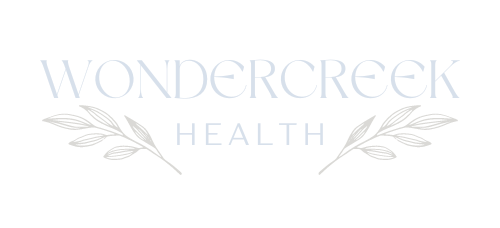
Welcome to Wondercreek Health!
If you have found yourself here, then like myself a few years ago and almost all of my other patients, you need validation, explanation & treatment of some whacky and frustrating things happening in your body these days!
Navigating the choppy waters of perimenopause can feel a lot like trying to solve a puzzle without all the pieces. It’s a journey that’s both uniquely personal and frustratingly elusive. Today, I want to share not just the facts, but also the feelings and strategies from someone who’s right there in the trenches with you.
The What and Why of Perimenopause
Perimenopause marks the transition toward menopause, the point when your ovaries gradually begin to make less estrogen. It typically starts in your 40s but can kick off in your 30s or even earlier. Symptoms vary widely in both type and severity, ranging from irregular periods to more surprising signs like heart palpitations and, of course, the infamous hot flashes.
Symptoms to Watch For
Here are a few common perimenopause symptoms that many of us may wave off as just stress or aging:
- Irregular Periods: This might be the first sign you notice. The length of time between periods may be longer or shorter, your flow may vary (IT CAN GET RIDICULOUS!), and you might even skip some periods.
- Hot Flashes and Night Sweats: These are the calling cards of the menopause transition. Sudden waves of heat can disrupt your day and your sleep. It can be subtle or dramatic, but there is a link between these heat waves and cardiovascular disease. They are not something to just SUFFER THROUGH!
- Sleep Problems: You might find it harder to fall asleep, or you might wake up long before your alarm and struggle to drift off again. This can really set the stage for all of the other symptoms to be amplified.
- Mood Changes: Fluctuations in hormones can lead to increased irritability or feelings of sadness. You may realize that you just don't feel love or joy the same and that you aren't laughing much or enjoying the things that you once did.
Managing Symptoms
While there’s no one-size-fits-all solution, here are just a few of the many strategies that have helped me and might help you too:
- Lifestyle Adjustments: Diet and exercise really are our best friends. Focus on heart-healthy foods and regular physical activity to help manage weight and stress.
- Hormone Therapy: This can be a game-changer for many women. It’s not right for everyone, but it’s worth discussing with a healthcare provider who takes your concerns seriously. This is a place where I am happy to work with you to find out if you (most women are) a candidate for hormone therapy.
- Mindfulness and Meditation: Both can be incredibly effective for managing stress and mood swings. I also love journaling. These practices help me stay centered and combat the mental fog that often comes with hormonal upheaval.
Seeking Support
You’re not alone in this. Connect with healthcare providers who listen—really listen—to what you’re experiencing. It’s crucial to feel supported and understood by your medical team.
I’m living this right now, right alongside you, and I believe in a proactive approach to perimenopause, one that embraces comprehensive care, empathy, and an abundance of caution. We're in this together, and I’m here to share every insight, setback, and victory along the way.
Let’s keep this conversation going. Have you started experiencing changes? How are you managing them? Share your story in the comments below—I’d love to hear from you. If you are looking for a partner to help you along this journey, I am thrilled to be on your team!
Warmly (like , all night where is the fan warmly,
Dr. Anna
WonderCreek Health Blog



